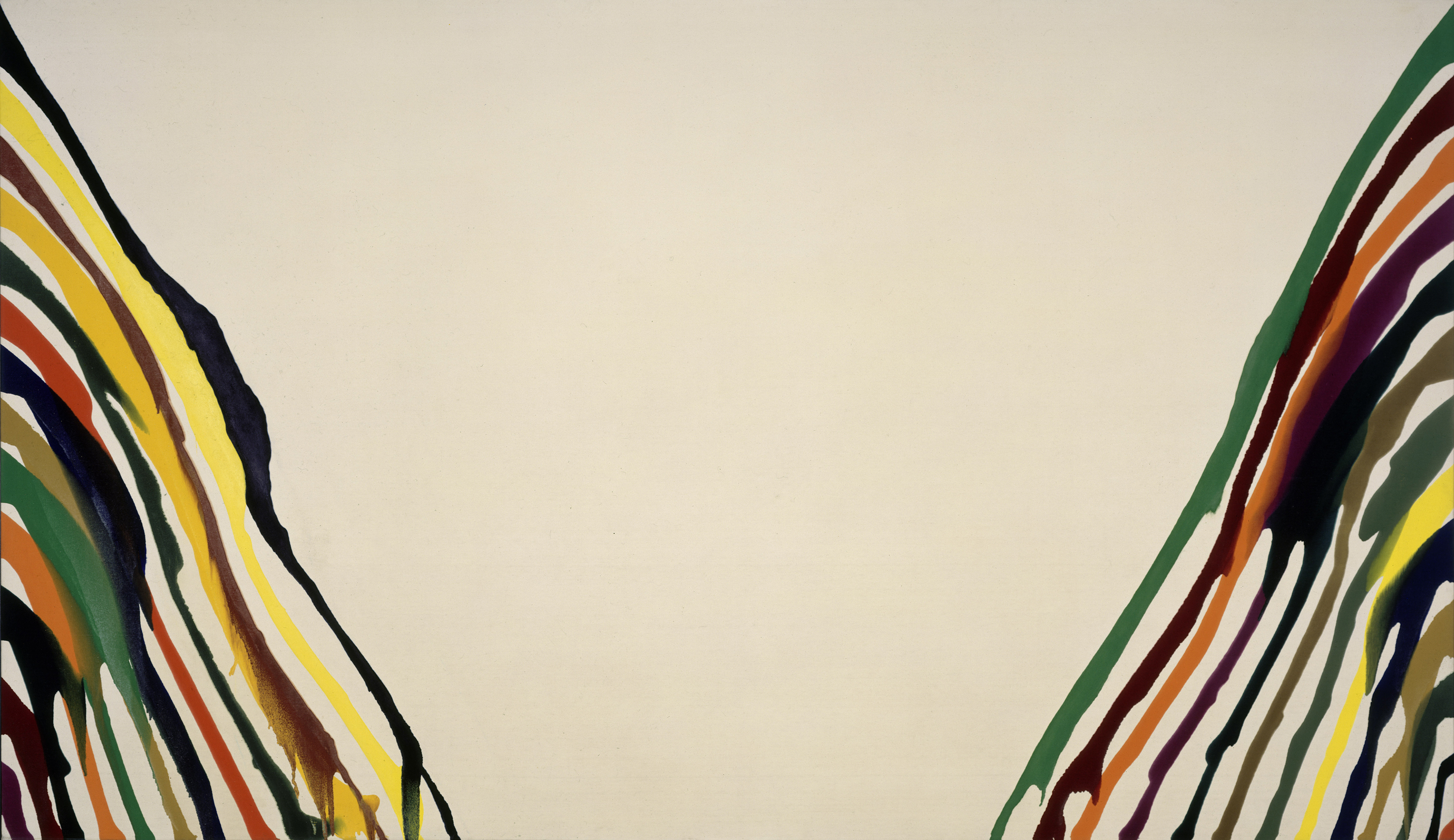Morris Louis
Beta Zeta, 1960/61
Artist
Morris Louis
Title
Beta Zeta
Year of creation
1960/61
Technique and dimensions
acrylic on canvas, 255 x 439 cm
Year of acquisition
1991
The son of Russian-Jewish emigrants created his major work in just a few years, even though he had already moved to New York in 1930. It was only his friendship with Kenneth Noland in 1952 that gave him his breakthrough into his own art form. Through Norland and the critic Charles Greenberg, he got to know Helen Frankenthaler and her coloring technique, which uses highly diluted oils.
In the years that followed, up until his early death in 1962, Louis pursued the different expressive possibilities of his color glazes stretched across the surface in four work phases.
The painting "Beta Zeta" - the title is only to be understood as a neutral designation - conveys a very balanced and yet exciting duality of calm and movement in its generously laid out symmetrical composition and the sparseness of the picture elements. The color stripes flowing in from the sides symbolize the everlasting rhythm of nature, which is embedded in the infinity of indefinable space.
As if released, the individual form areas unfold from a shared, sensitive bond. With its few impulses and its large, floating "emptiness", the picture acts like a meditation that shows existence as an existing and yet intangible quantity.
“The viewer stands, as it were, in a layer of color,” stated director Dieter Honisch in 1970, “so that the color penetrates him from outside.” The extremely differentiated combination of color, form and ground is one of the most intelligent solutions that the new American painting has produced.
Fritz Jacobi
